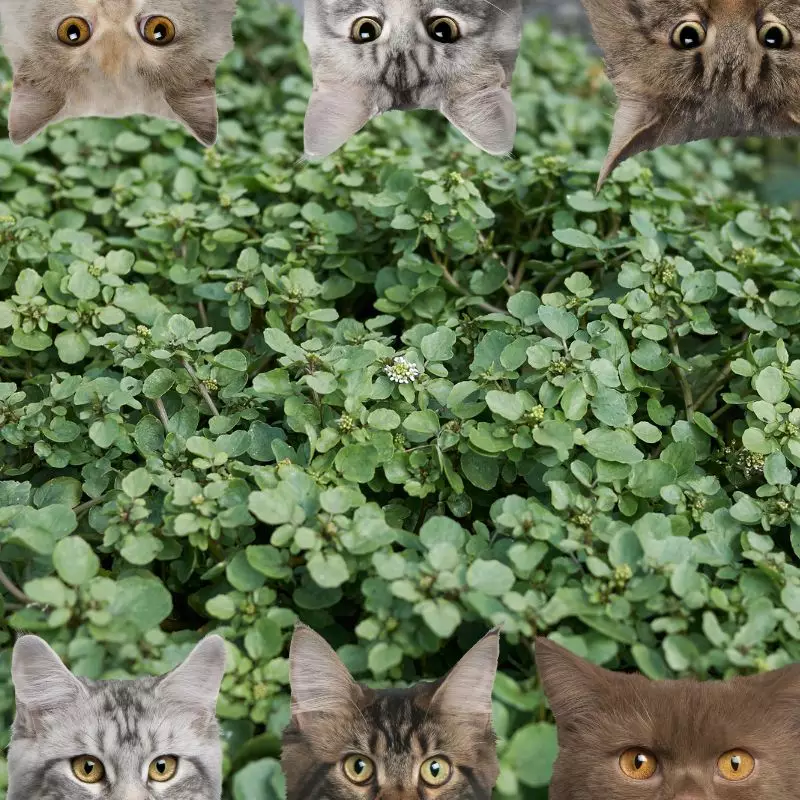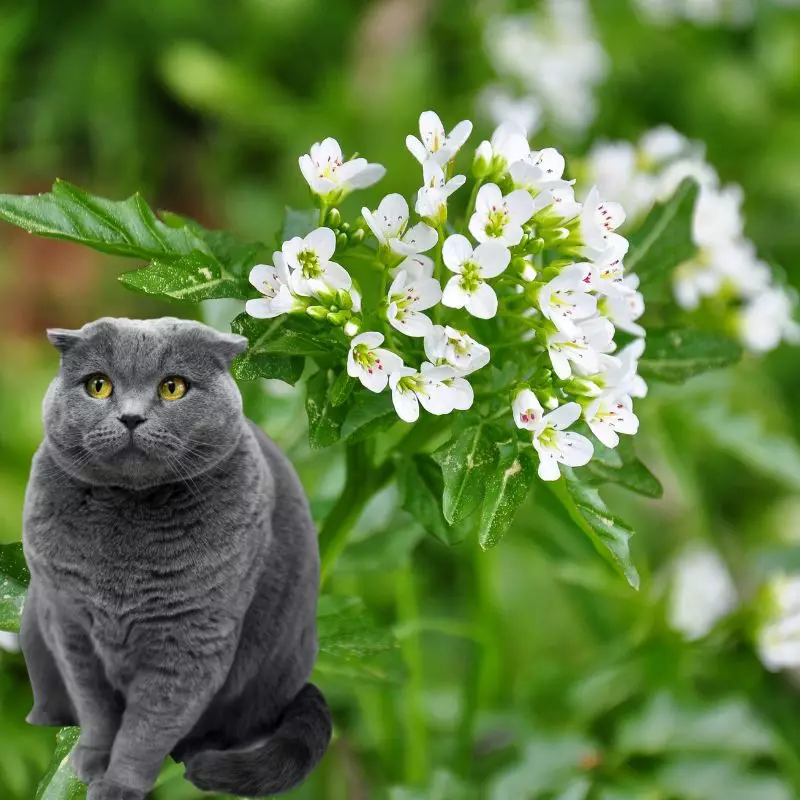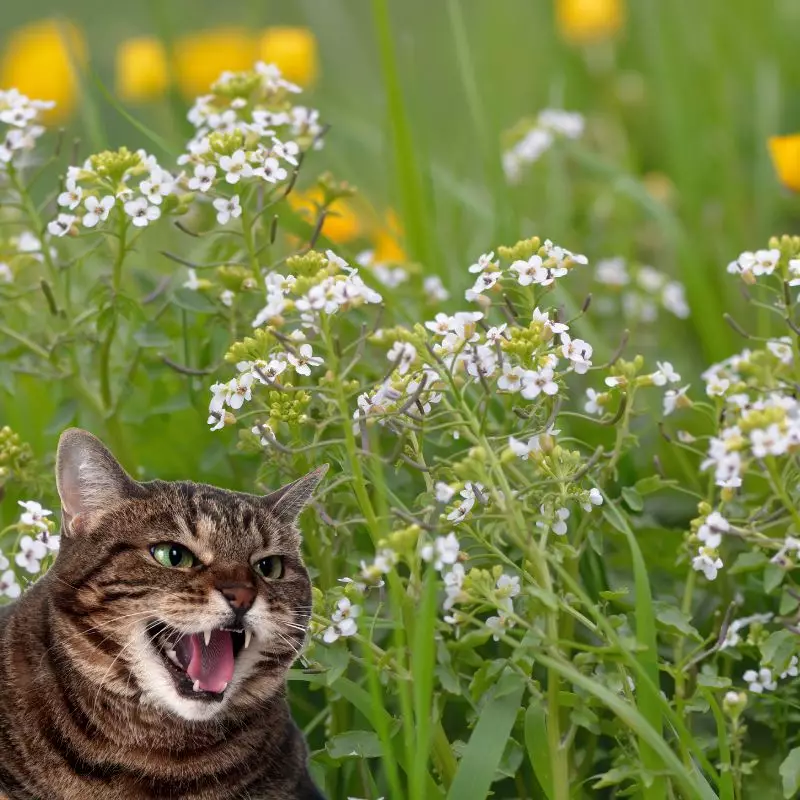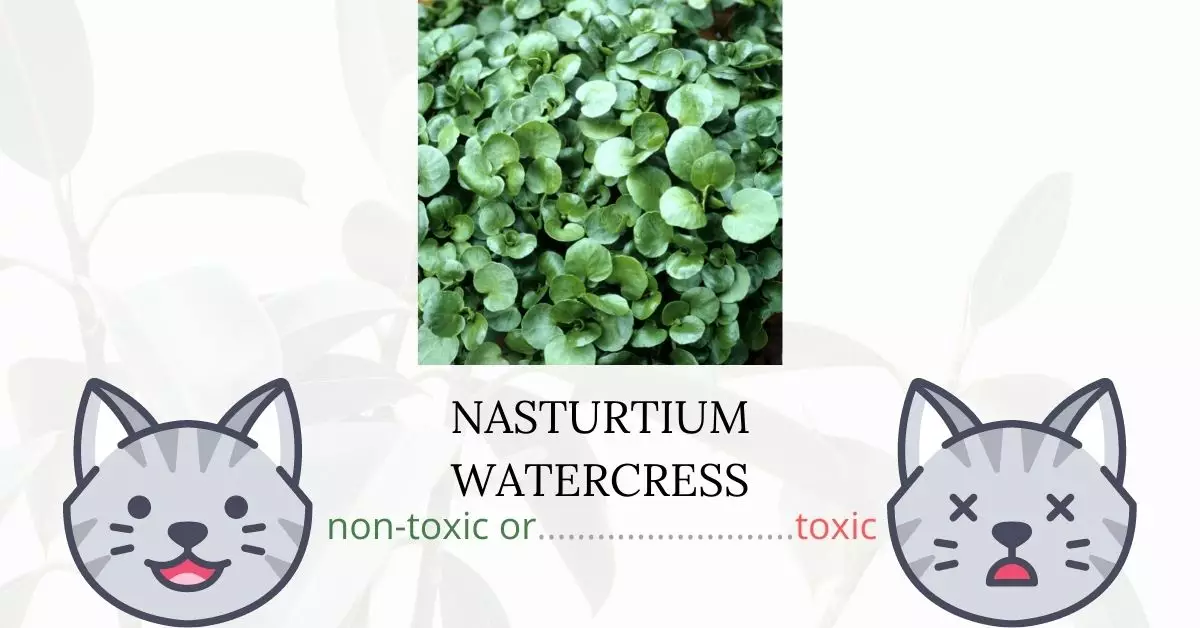Nasturtium watercress, while not inherently toxic, can cause mild stomach upset in cats due to the presence of gastrointestinal irritants. Notably, wild or garden-grown nasturtium watercress, if ingested in large quantities, may present risks, especially if it has filtered toxins from contaminated water. On the other hand, manufactured nasturtium watercress varieties are typically safe for consumption.
This article was written in close collaboration with a team of experienced DVMs (doctors of veterinary medicine). Their invaluable insights, paired with comprehensive research from high-authority websites like ASPCA and PetMD, ensure that we provide accurate and current information regarding the potential risks of various plants, including Nasturtium Watercress, on cats.
Clinical Signs of Nasturtium Watercress Poisoning in Cats

When cats come into contact with, smell, or ingest Nasturtium Watercress, especially in significant amounts, they may exhibit signs of poisoning. This is primarily due to the gastrointestinal irritants present in the plant which the feline digestive system finds challenging to process. Here’s a breakdown of the clinical signs and their causative factors:
- Vomiting: This is one of the body’s primary defense mechanisms to expel foreign or harmful substances. In the case of Nasturtium Watercress ingestion, the gastrointestinal irritants can trigger the cat’s vomiting reflex to remove the indigestible plant matter.
- Diarrhea: Similarly, diarrhea is another method by which the cat’s body attempts to rapidly expel irritants. The ingestion of the plant accelerates bowel movements, leading to loose stools.
- Weakness: The cat’s energy can be sapped as its body reacts to the foreign substance. Additionally, consistent vomiting and diarrhea can lead to dehydration, further contributing to a state of weakness.
- Depression: A cat’s demeanor might change due to the physical discomfort and malaise caused by the ingestion of the plant. The overall feeling of being unwell can cause the cat to be less active and show signs of depression.
It’s essential to monitor cats for these symptoms if there’s a suspicion of Nasturtium Watercress ingestion and consult with a veterinarian for appropriate treatment.
First Aid and Treatment of Nasturtium Watercress Poisoning in Cats

Because nasturtium watercress is primarily an overdose of the stimulant and not a real poisoning, there is no specific therapy for the illness. The cat’s body performs a good job of eliminating the toxin from the body by vomiting it out and passing the digested components through waste. On the other hand, your cat may need veterinarian help to induce vomiting, restore fluids, and treat any subsequent infections or intoxications. During a veterinarian visit, the feline may be given an emetic medication or a drug that causes vomiting, along with intravenous fluids.
Recovery from Nasturtium Watercress Poisoning in Cats

The toxic repercussions of nasturtium watercress poisoning in cats are brief, lasting only a few hours after vomiting or diarrhea has occurred. The cat will recover completely in a few hours as long as it is not exposed to the plant again. While the cat is recuperating, give a lot of fluids to maintain hydration and aid in clearing up toxin contents in the stomach.
Prevention of Nasturtium Watercress Poisoning in Cats
To prevent a poisoning occurrence in the future, limit your cat’s exposure to the plant by restricting his access outdoors. Keeping your cats entertained and active within your home is safer since it reduces the chance of them coming into contact with hazardous plants growing nearby. Stop giving your cat any supplementary products that contain nasturtium watercress as one of the major ingredients.
If you love plants but have cats at home, check out these lists:





